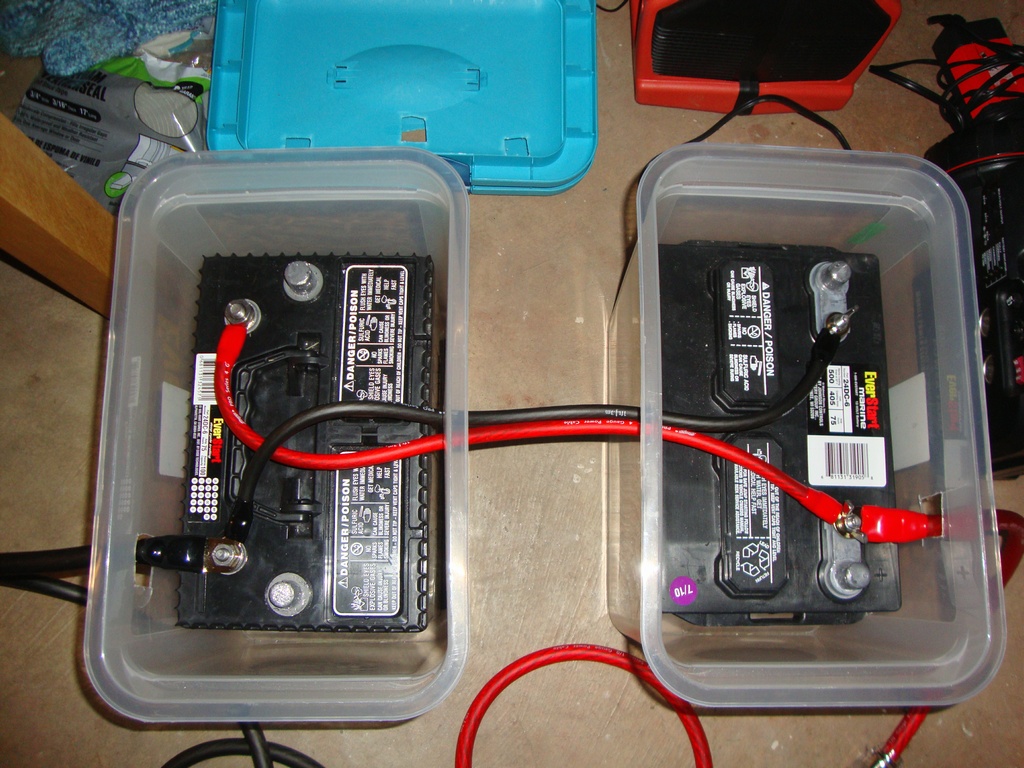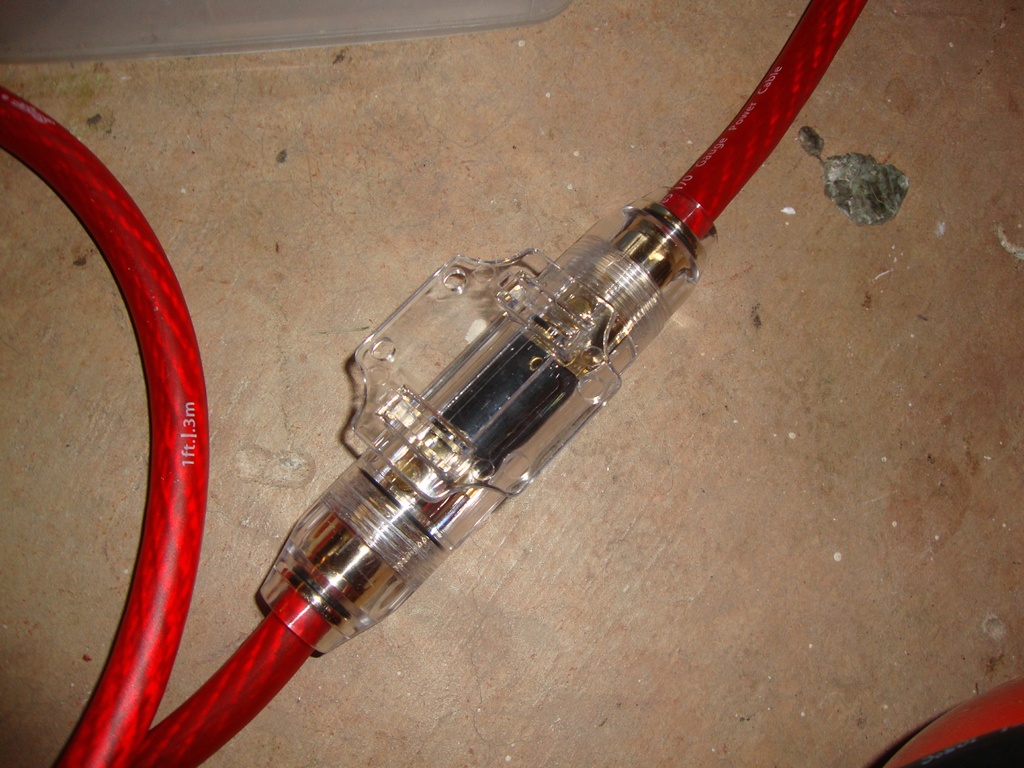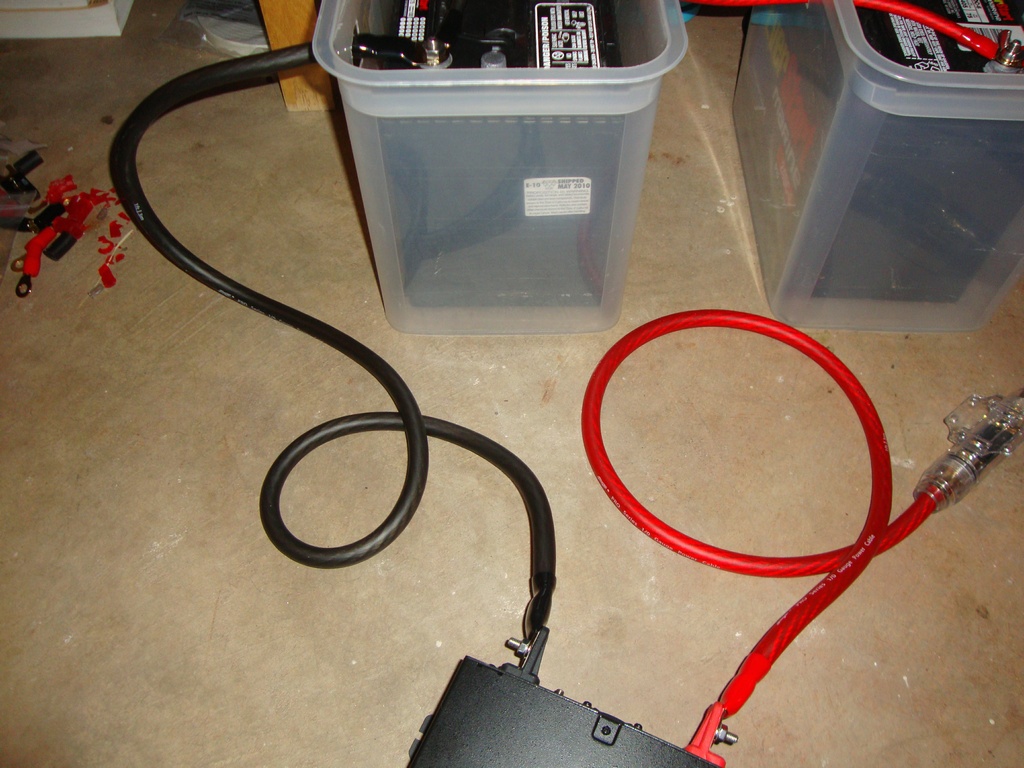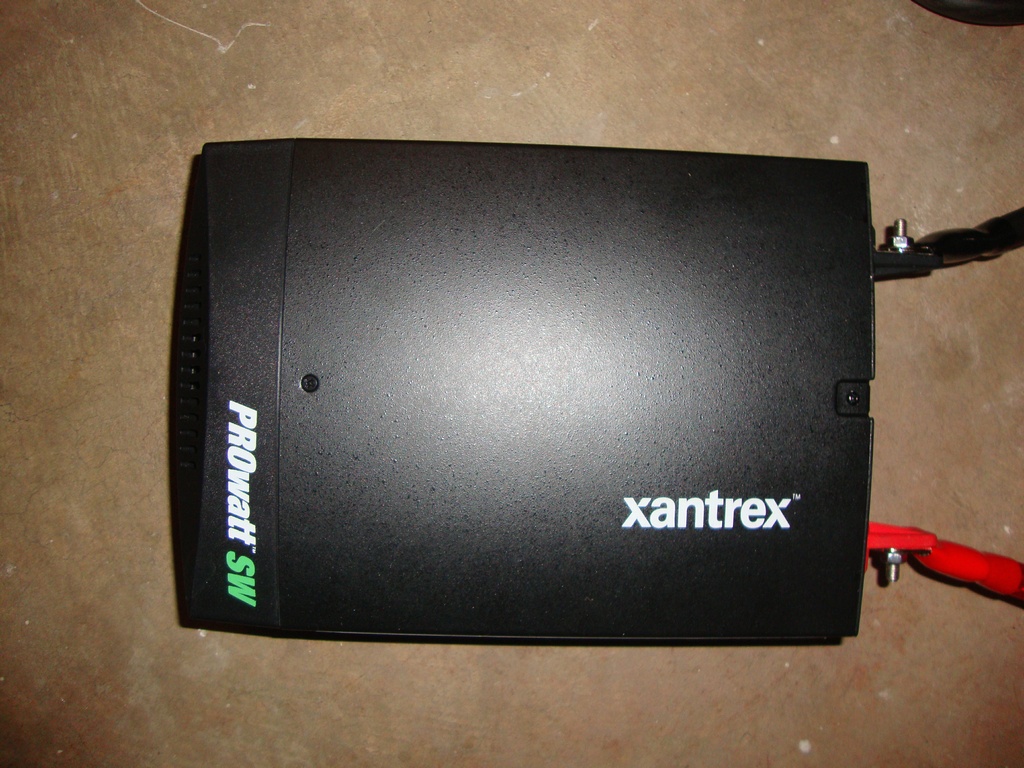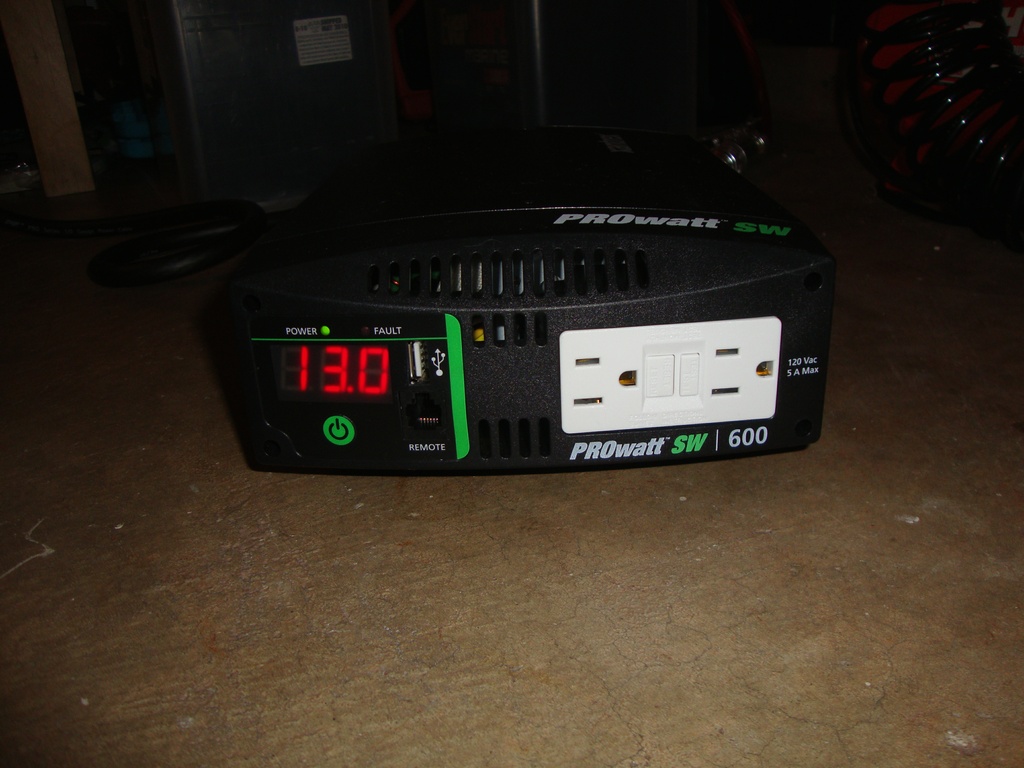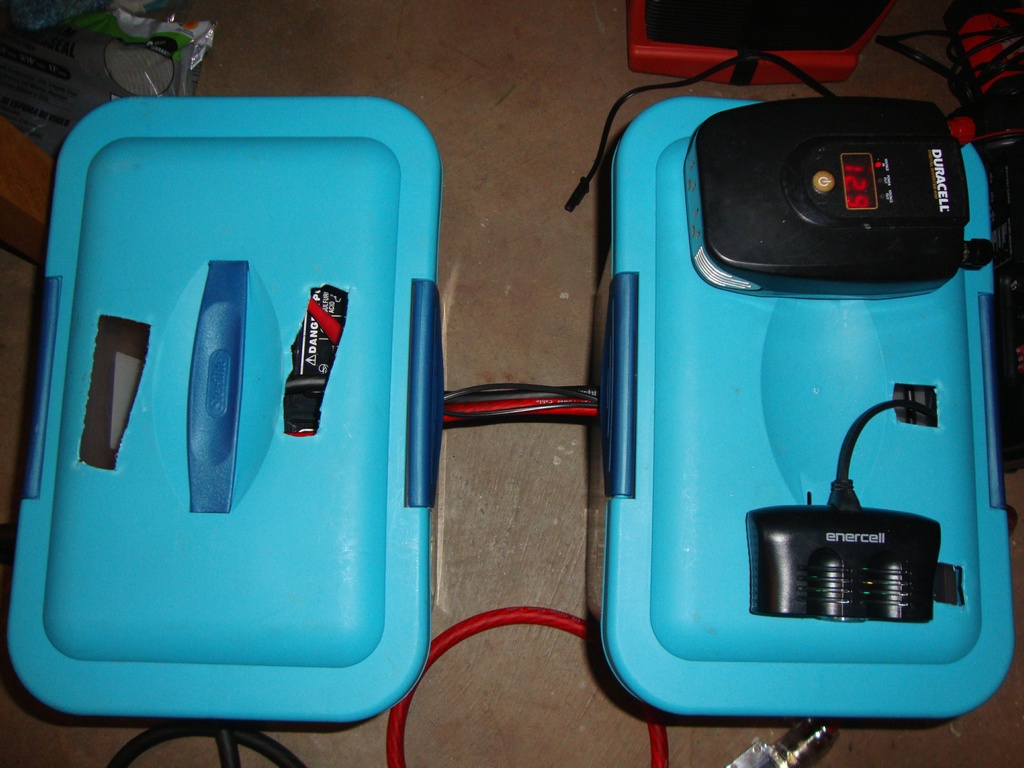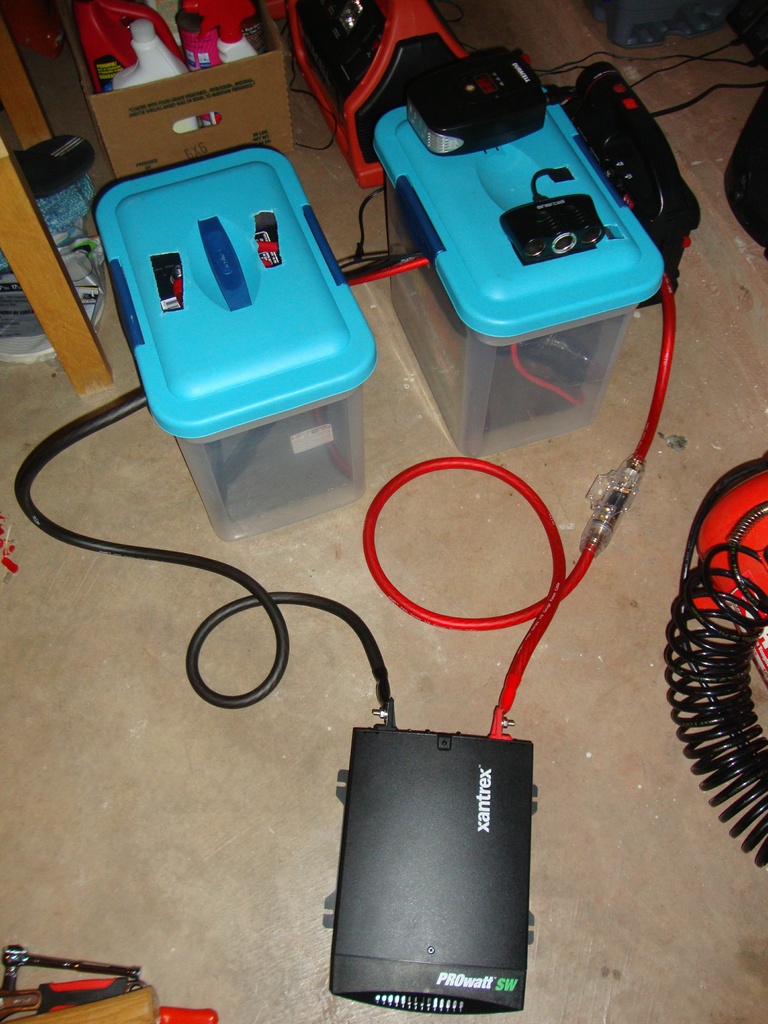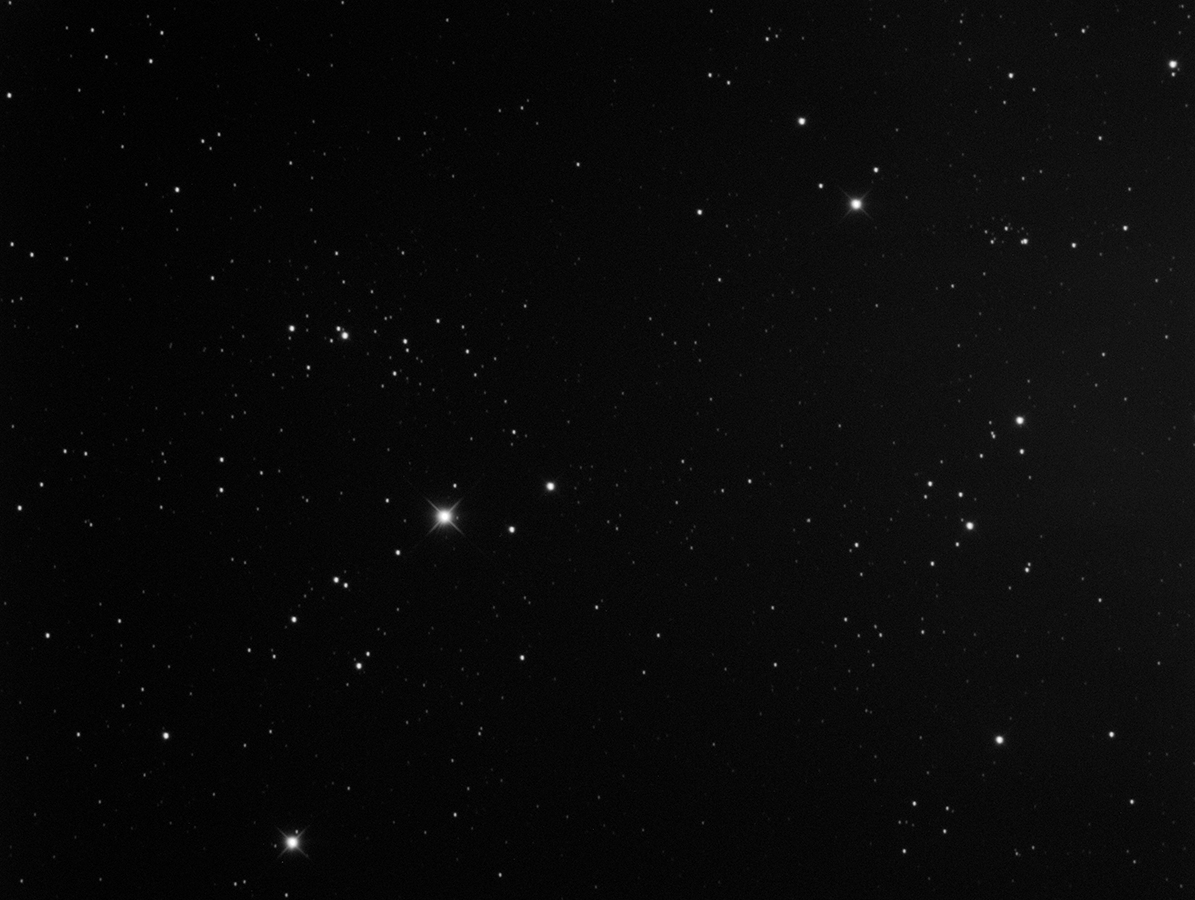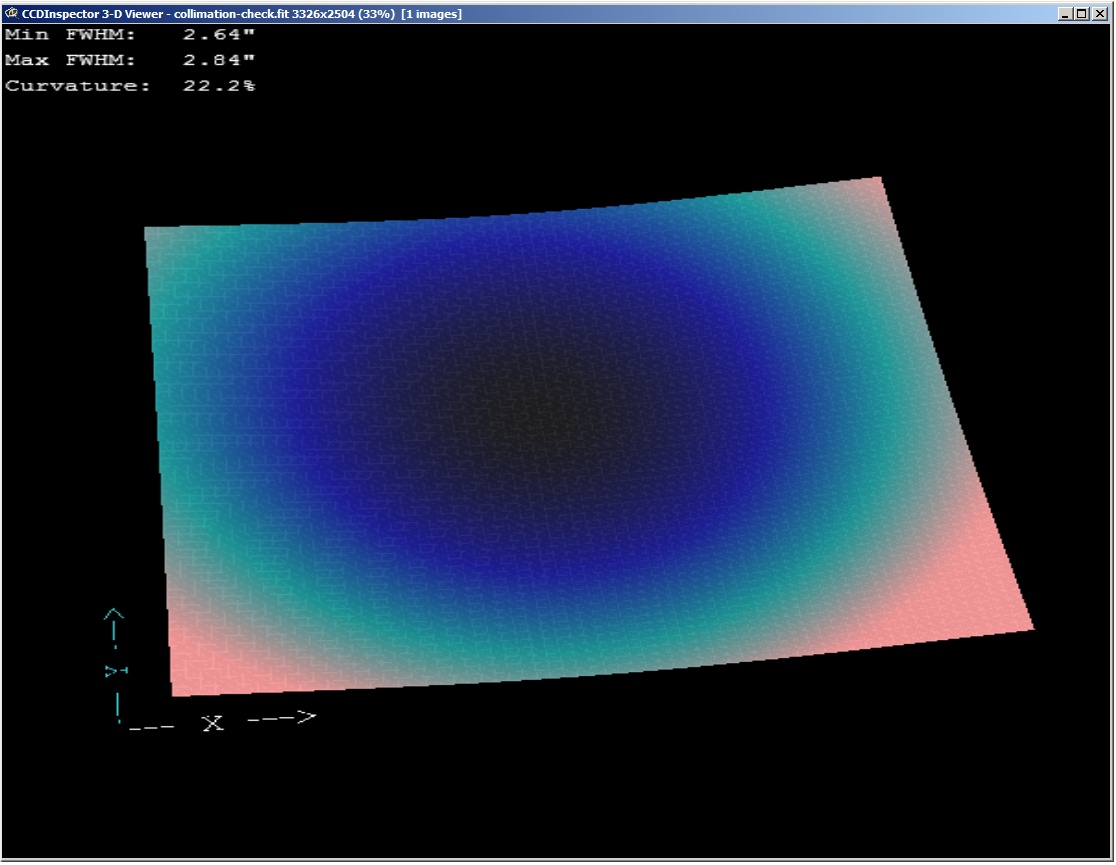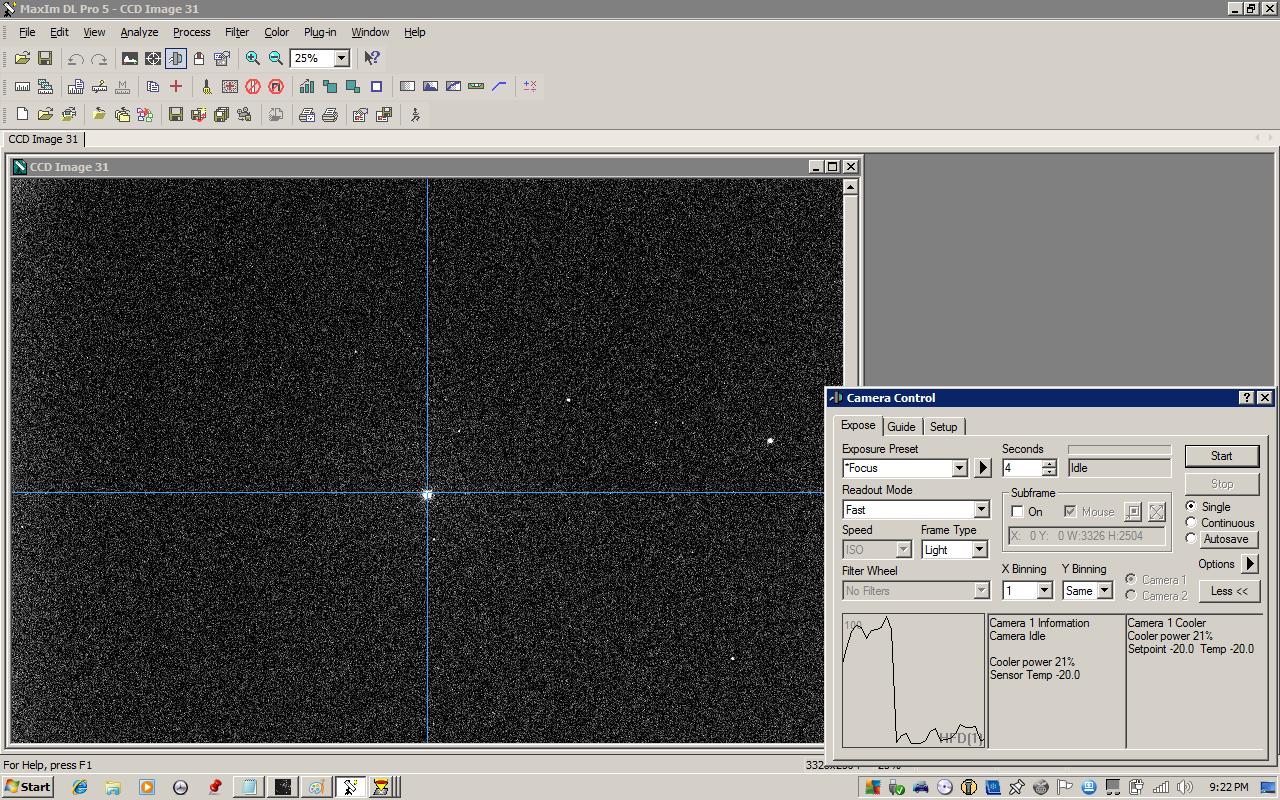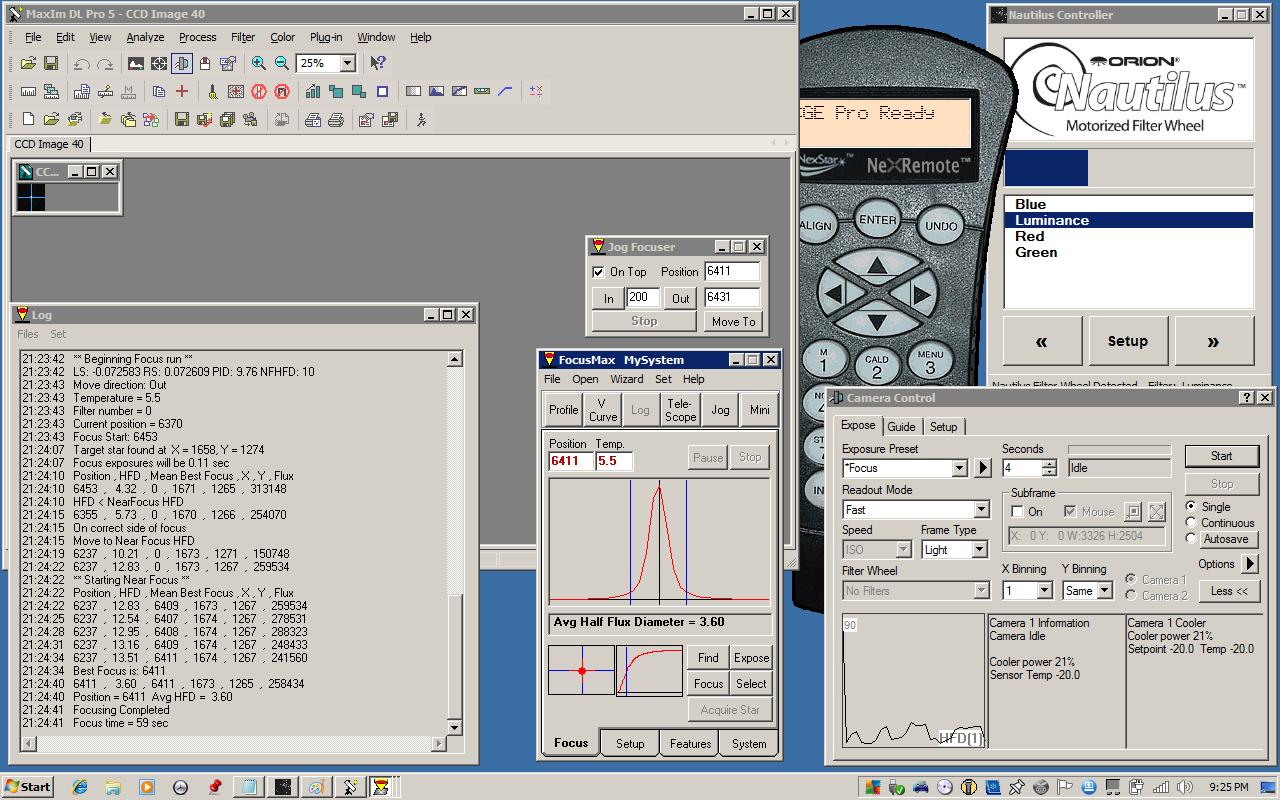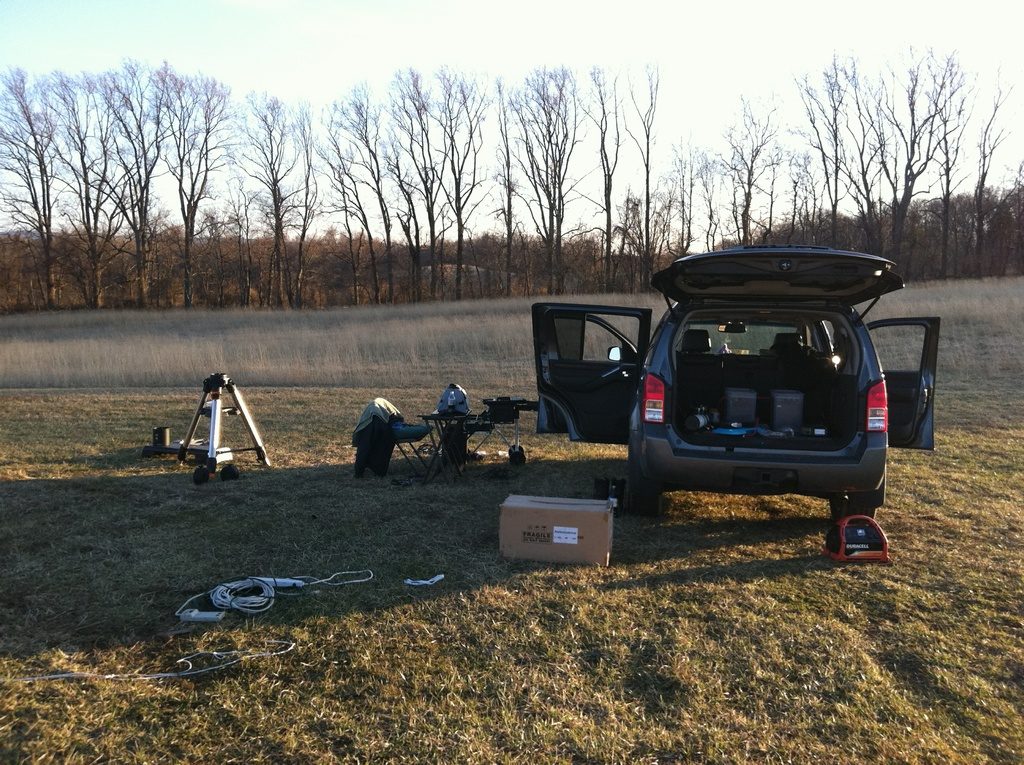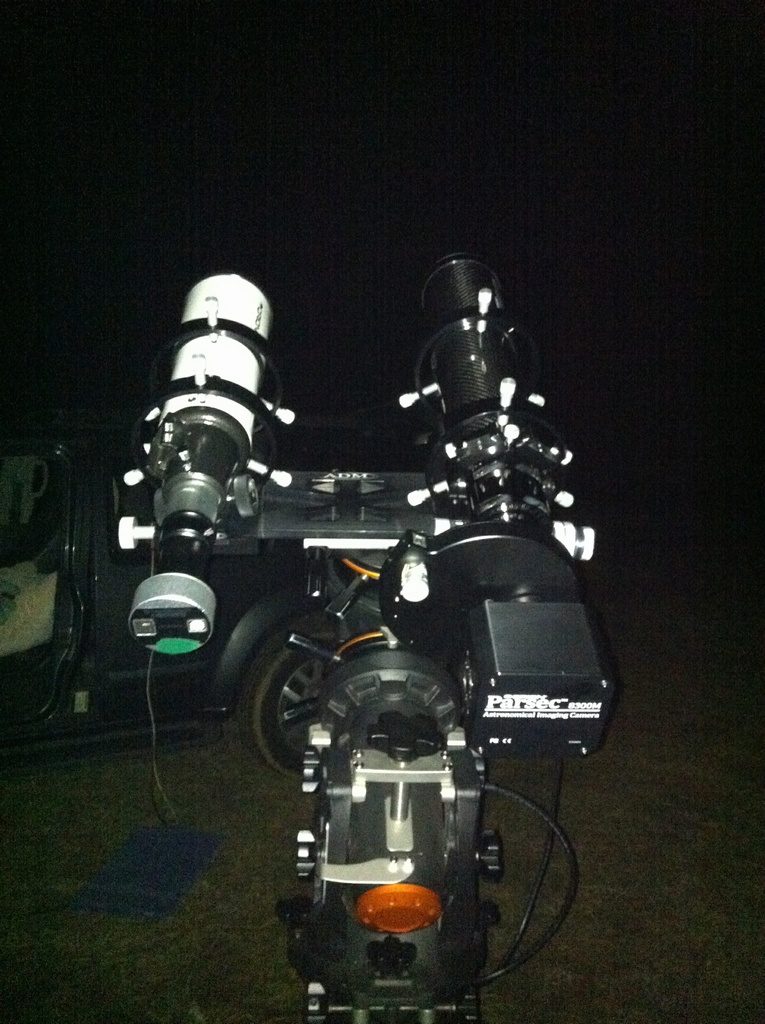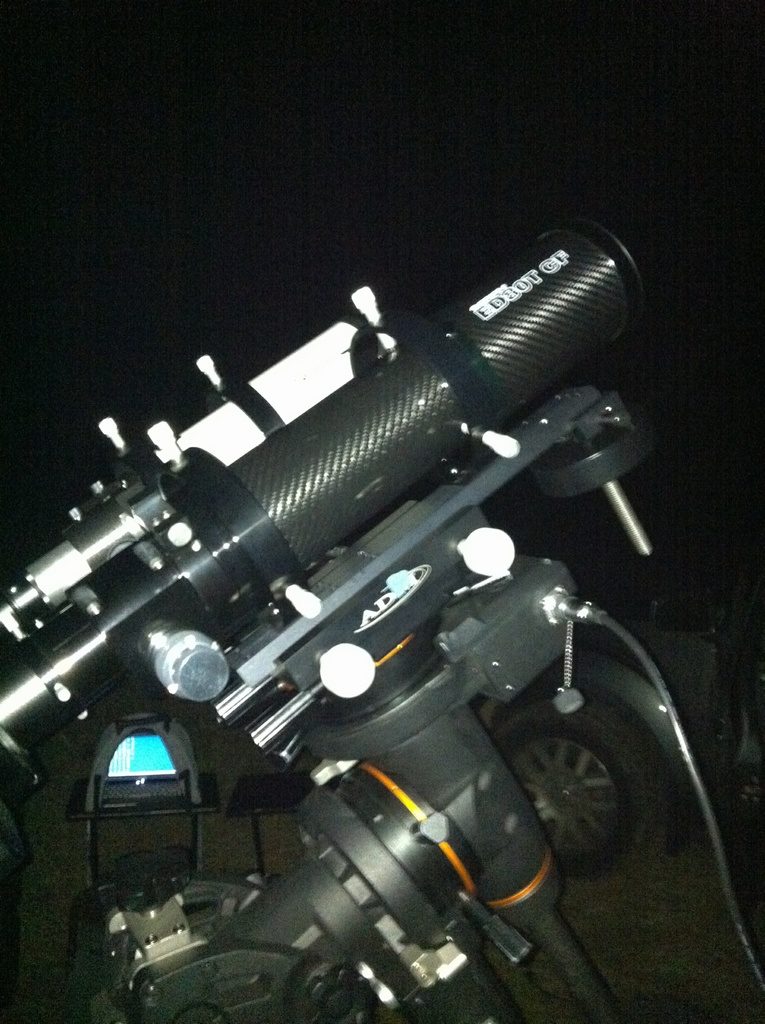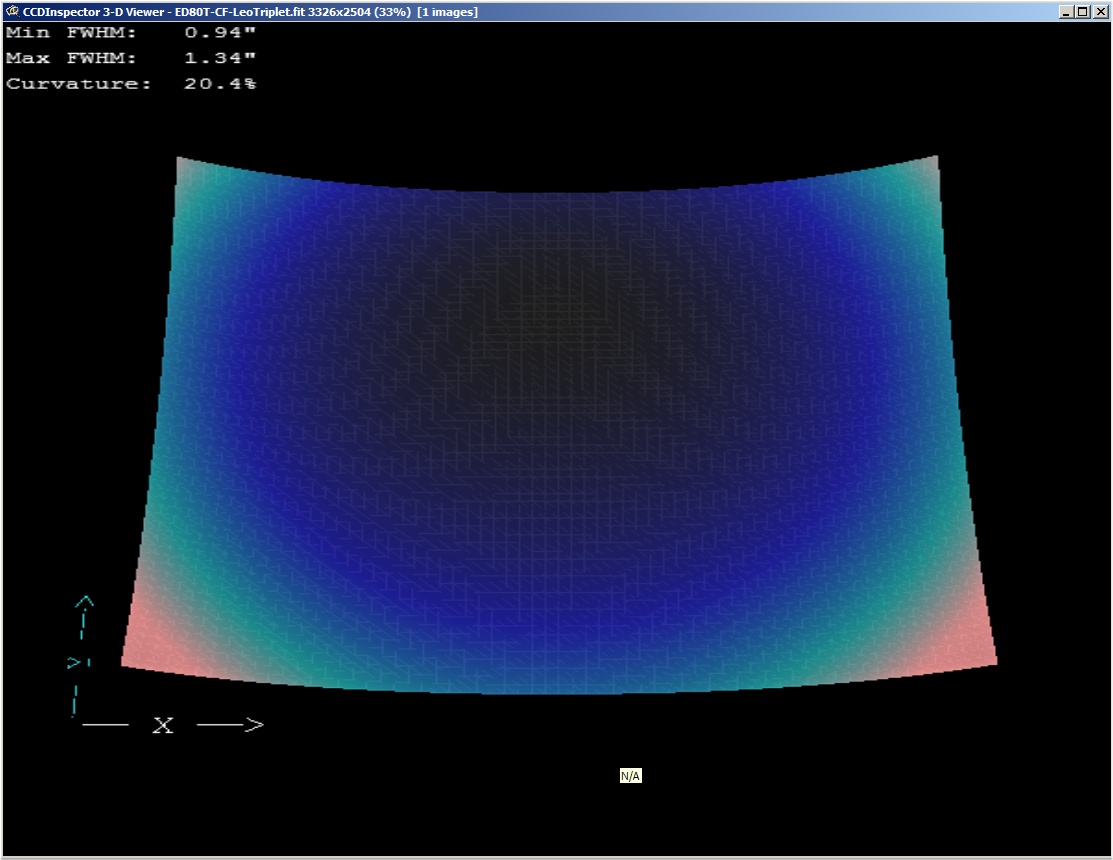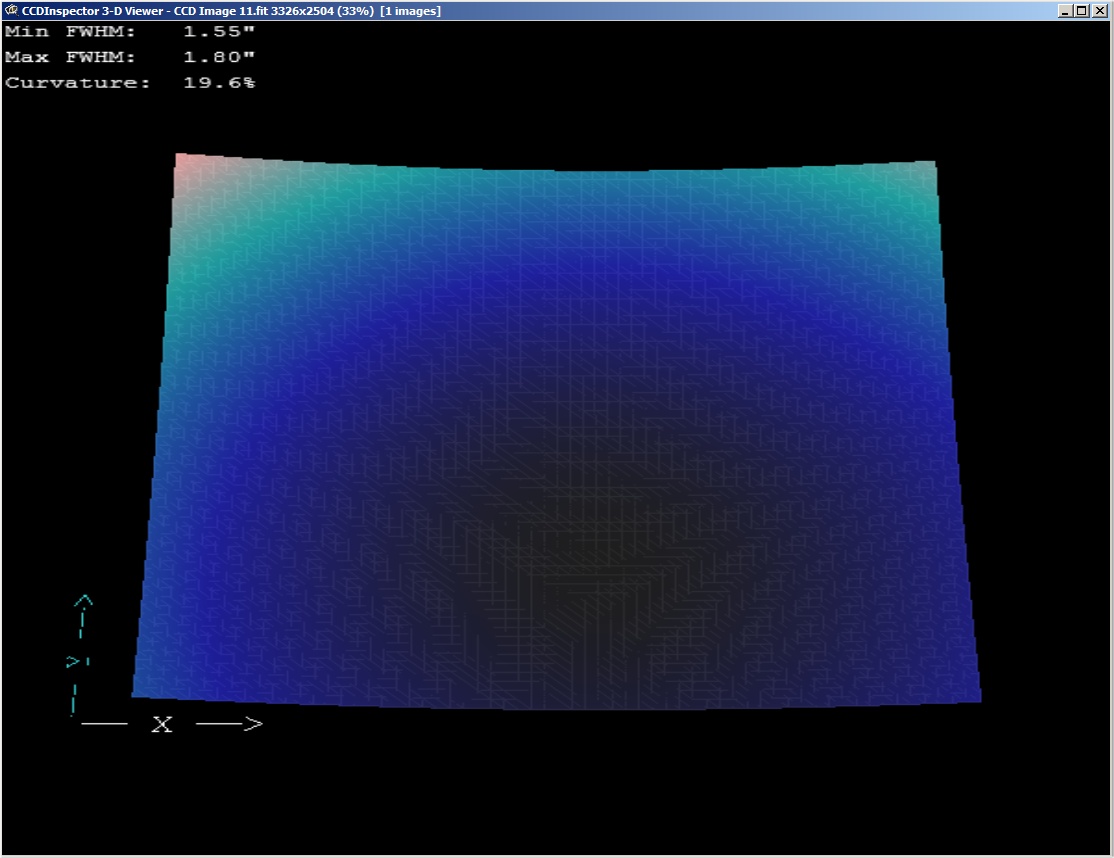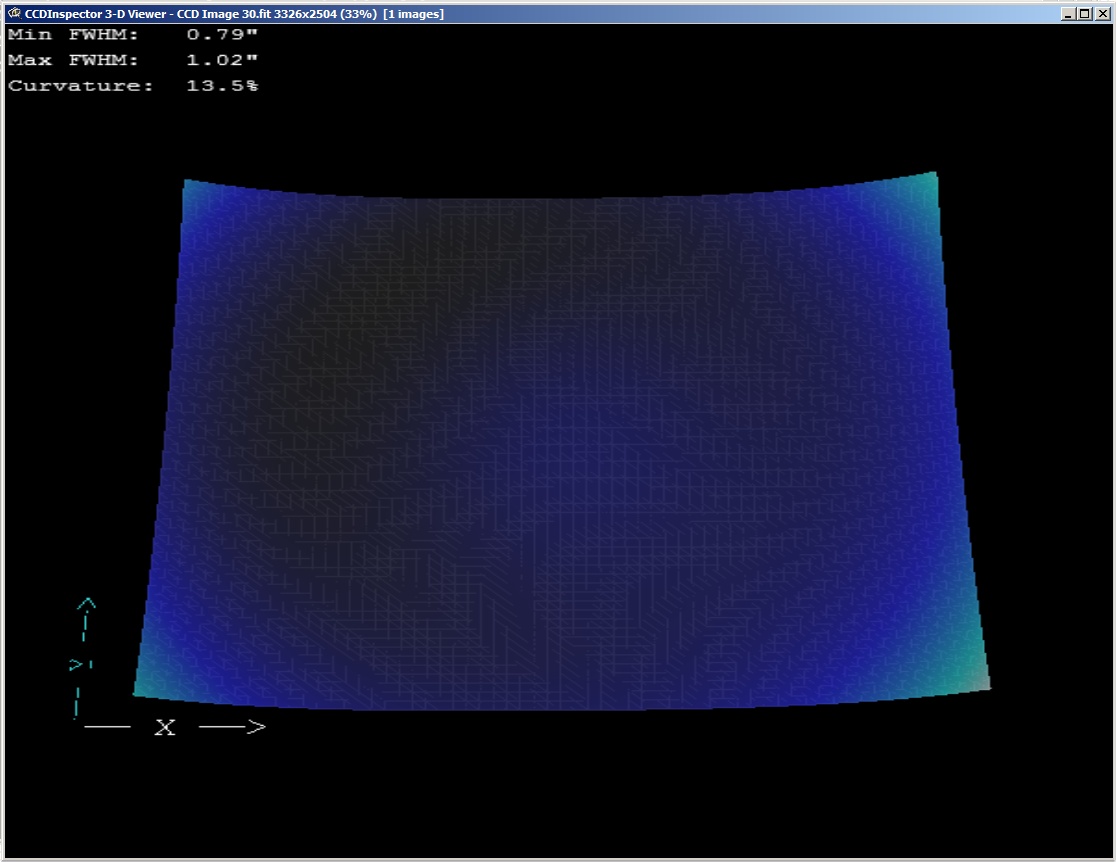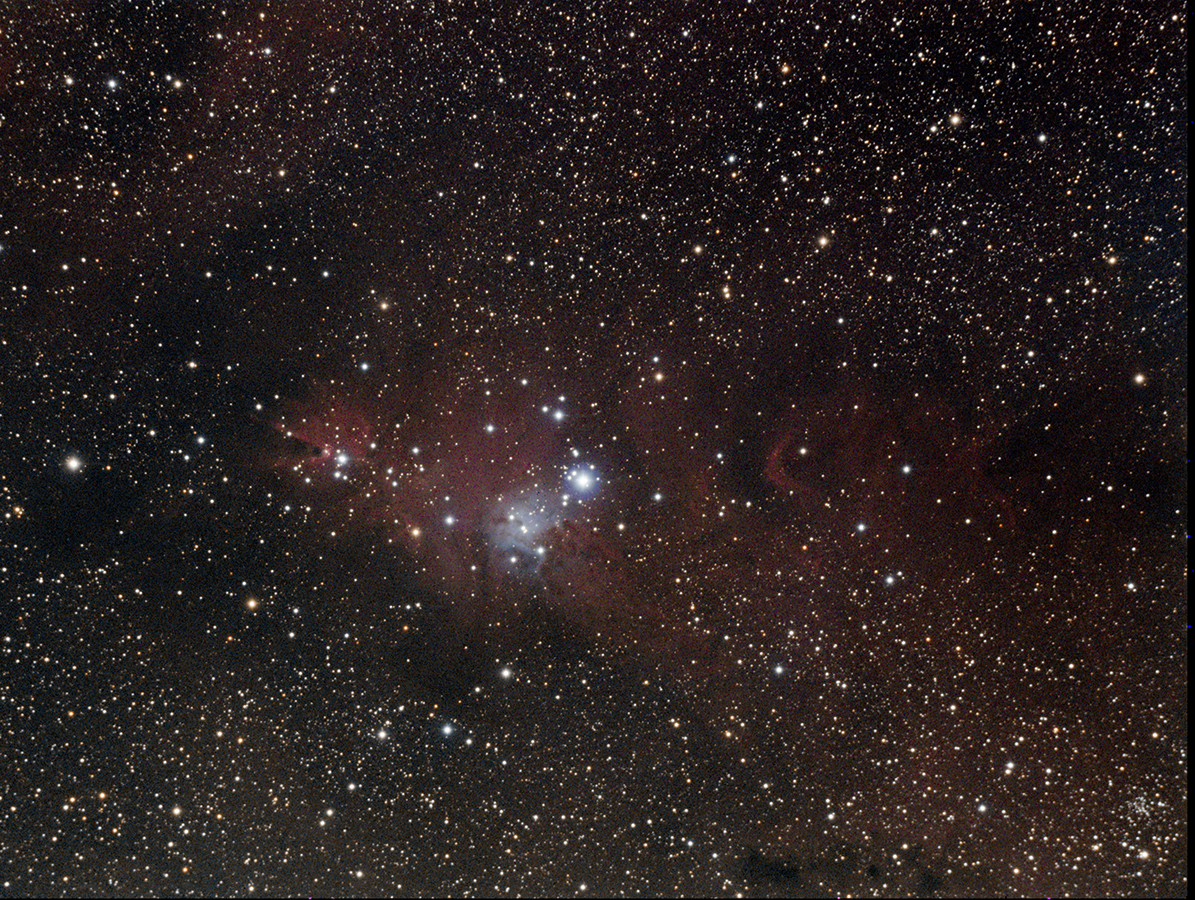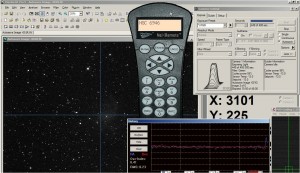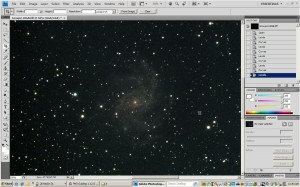I’ve been asked a couple times what I do for power in the field. Here it is.
- 2 x Everstart 24DC-6 flooded lead-acid hybrid deep cycle/marine batteries wired in parallel. 75AH each, 150AH in total
- 0 gauge cable with nice ring connectors throughout, including between batteries (ignore the pics, I had 4-gauge on between the batteries then with 0 gauge to the inverter)
- 80A ANL inline fuse on the positive side
- Xantrex ProwattSW 600 pure sine wave inverter (For the mount exclusively)
- DuraCell Digital inverter 400 (for two laptops and everything else, modified sine wave)
- Enercell 3-outlet DC cigarette adapter for the Parsec 8300M
- Battery Tender Plus 12V 1.25A charger
This system powers everything in the field, mount, two laptops, focuser, powered USB hubs, and camera. And anything else I want to throw at it. I keep it in the car when it’s cold out, and run extension cords to the gear. After two nights in a row of heavy use without a charge the voltage will still be 12.3V.
The only maintenance needing to be done is the occaisional top-off of the batteries with distilled water. I’ve only needed to do that once, and it was very little.
After two nights of heavy use in a row it’ll take about 3 days to fully recharge using the 4-stage Battery Tender unit. That is a fantastic charger by the way.
Needless to say, no power worries in the field. 🙂
I still have two Duracell Powerpack 600’s. I’ll take one with me, for dew heater use and/or DC powered hairdryer use. But these don’t see much use any more.
Pictures:

